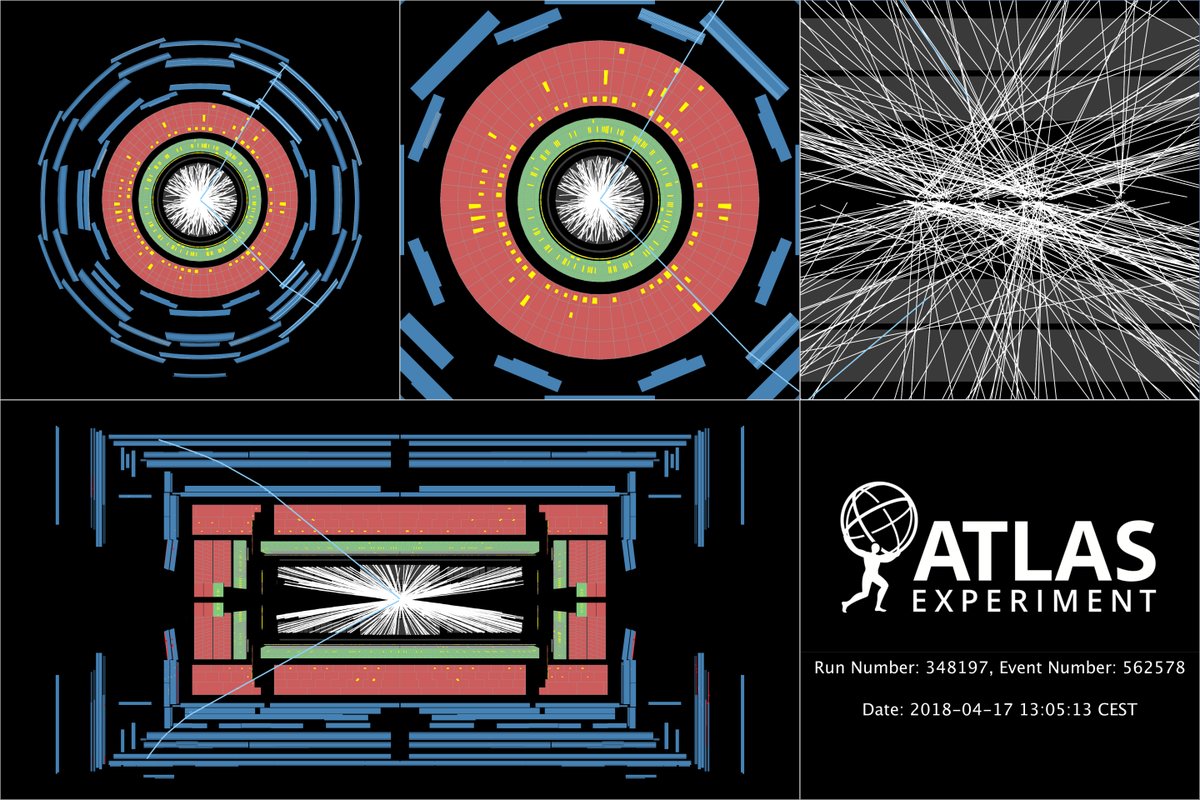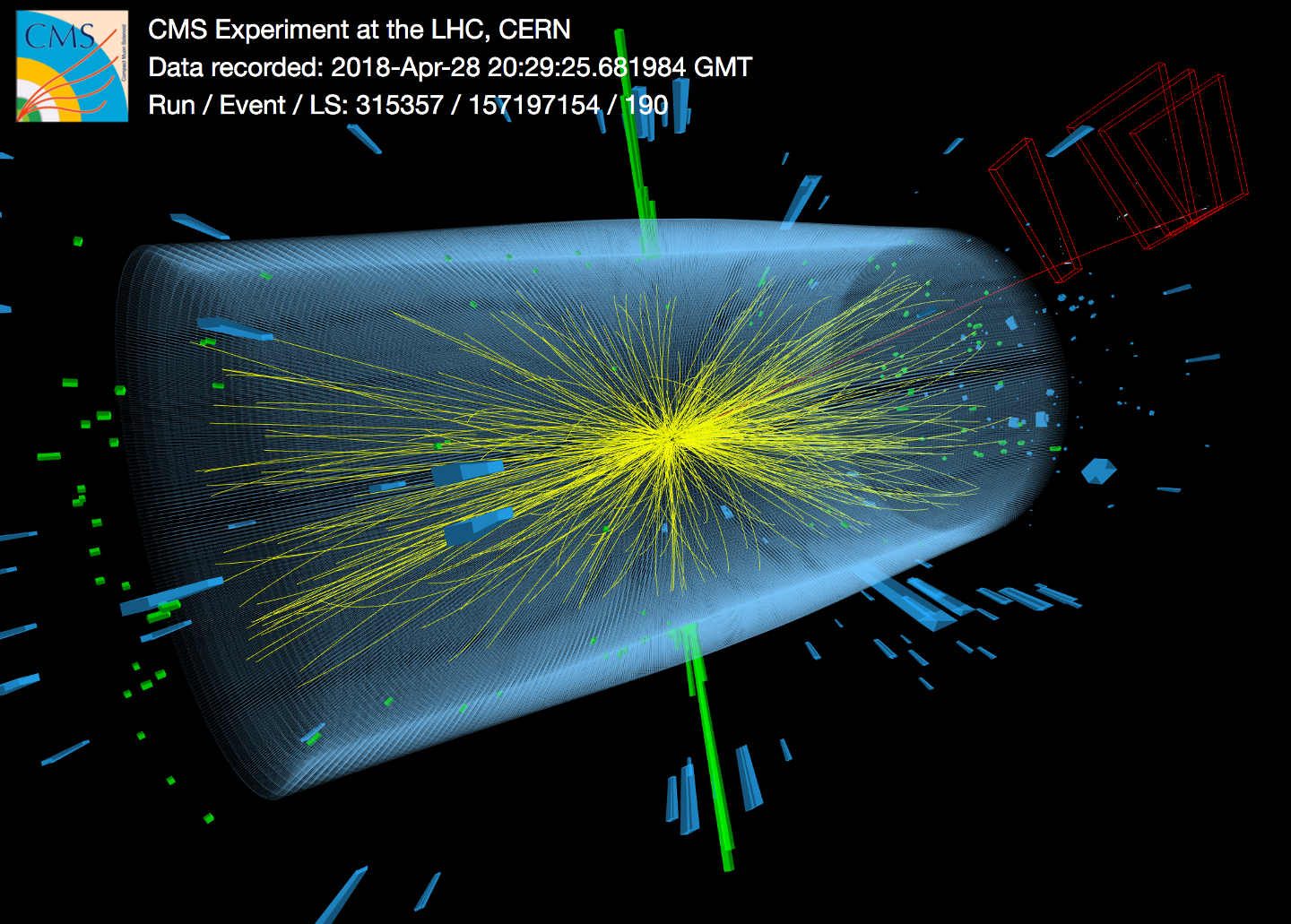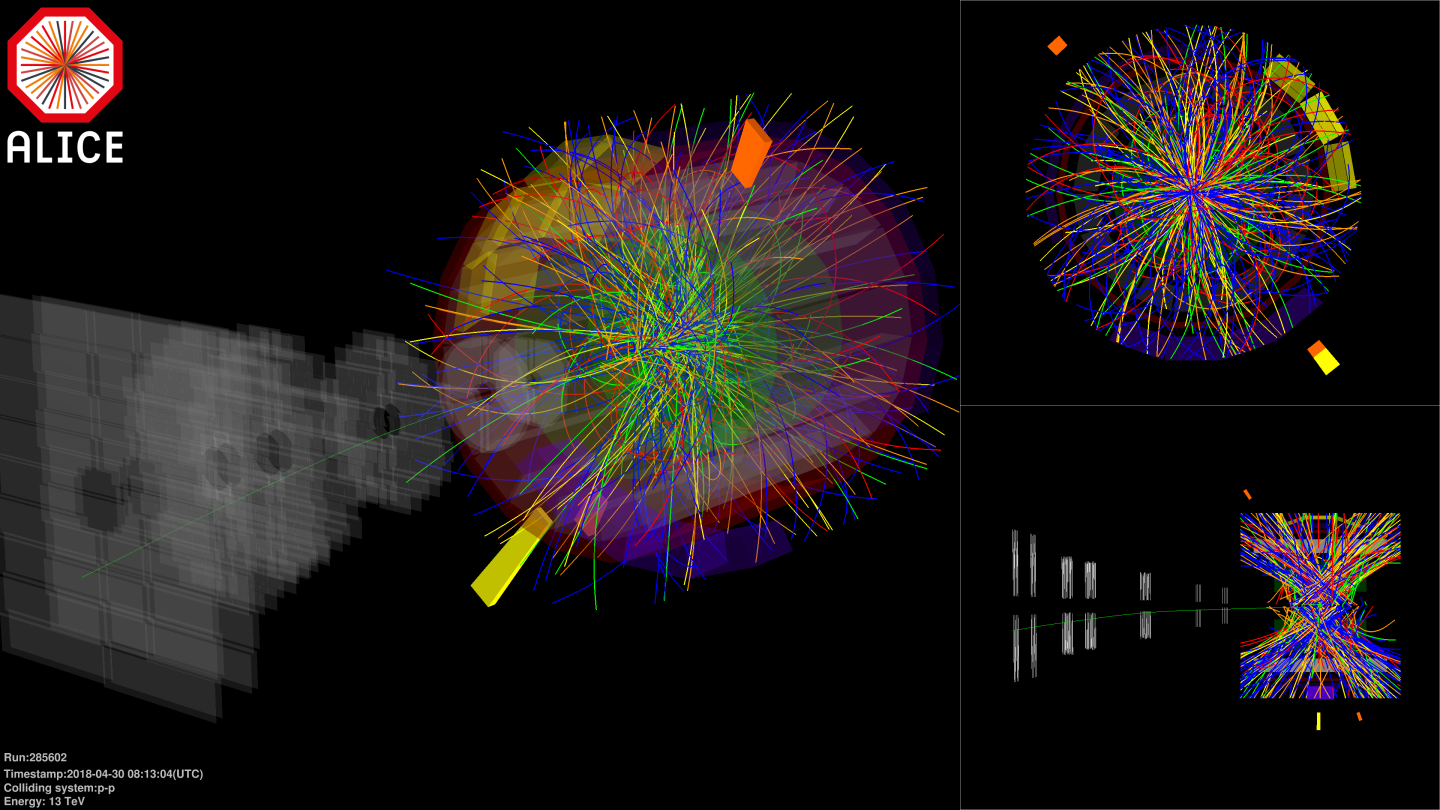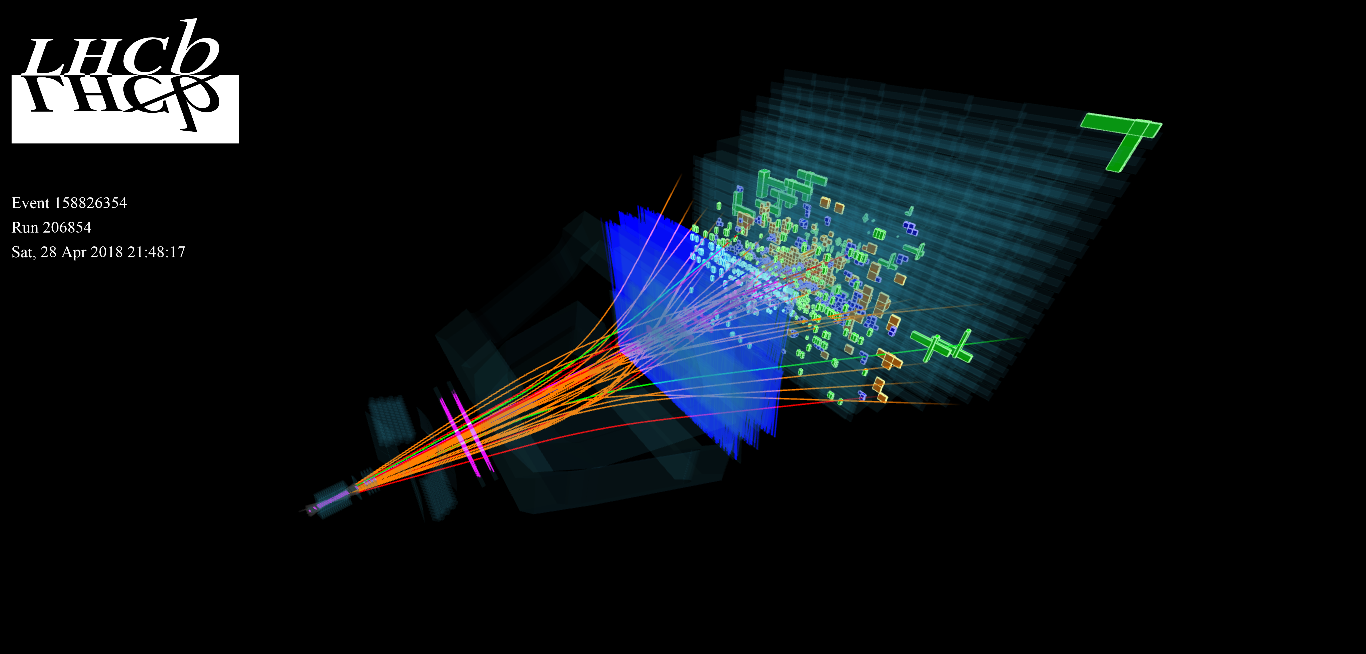On Saturday, 28 April 2018, the operators of the Large Hadron Collider (LHC) successfully injected 1200 bunches of protons into the machine and collided them. This formally marks the beginning of the LHC’s 2018 physics season. The start of the physics run comes a few days ahead of schedule, continuing the LHC’s impressive re-awakening since the end of its annual winter hibernation just over a month ago. In early April, a small number of bunches were injected into the ring to deliver test collisions inside the four large LHC experiments. These experiments – ALICE, ATLAS, CMS and LHCb – have now begun their data collection in earnest, which they will use to continue measuring the properties of the Standard Model of particle physics and search for any chinks in its armour.
The Standard Model provides the best explanation of the properties of all known particles and three forces that govern them: the electromagnetic force, the weak force and the strong force. But we know that this model does not give us the complete picture of our universe. For one, it only addresses 5% of the contents of the universe: the remaining 95% is thought to be made of dark matter and dark energy, and the Standard Model has no answers for these mysteries. It also does not provide any way of integrating gravity with the three other forces.
Particle physicists working on the LHC experiments seek explanations to fill this gap in two principle ways. Firstly, they do so by taking a close look at various phenomena predicted by the Standard Model and looking for subtle differences between prediction and measurement. In addition, they search for previously unobserved phenomena and particles. Both types of searches for physics beyond the Standard Model require huge quantities of data in order to filter a potential signal from the expected background processes. The LHC experiments will therefore hope that the LHC continues its annual tradition of outdoing its previous year’s data volume.

ATLAS and CMS, the two “general-purpose” detectors, will continue to probe the properties of the Higgs boson that they discovered in July 2012. This particle is the newest tool in the utility belt used by particle physicists to explore the properties of nature. Since its discovery, physicists have studied its behaviour and interactions with other particles, which have so far shown good agreement with the Standard Model. Searches will also continue for supersymmetric partners of the familiar bosons and fermions that are predicted to exist by a family of theories known as supersymmetry, which might provide us with a candidate for a dark-matter particle. ATLAS, CMS and LHCb are also searching for hints of dark matter through other means, and will add the forthcoming trove of data to their stockpiles as they advance their explorations.

Among other searches, LHCb will continue to seek a solution to the problem of matter-antimatter asymmetry, as the Standard Model cannot adequately explain the observed abundance of matter in the universe. When matter was formed in the Big Bang, there should have been an equal amount of antimatter accompanying it; each matter-antimatter pair should then have annihilated upon contact, leaving us with a universe without stars or human beings to observe them.
ALICE, the LHC’s heavy-ion specialist, focuses on collisions of lead nuclei in order to study the strong interaction and the quark-gluon plasma, a state of matter that is believed to have prevailed in the very early universe. However, ALICE will also record proton-proton collisions to continue its investigation of the properties of collision events that contain a large number of particles produced at the same time and to serve as a baseline with which to compare lead-lead collisions.

The LHC operators will keep ramping up the number of bunches, aiming to hit 2556 bunches in total. This will help them achieve their target of 60 inverse femtobarns (fb-1) of proton-proton collisions this year delivered to both ATLAS and CMS, 20% more than the 50 fb-1 achieved in 2017. In simple terms, each inverse femtobarn can correspond to up to 100 million million (1014) individual collisions between protons. The proton-proton run will be followed by the first heavy-ion run since 2016; the LHC will inject and collide lead nuclei at the end of the year.
This is the last year with collisions before the LHC enters a period of hibernation until spring 2021, known as Long Shutdown 2, during which the machine and the experiments will be upgraded. All four experiments will therefore hope to maximise their data-collection efficiency to keep themselves occupied with many analyses and new results over the two-year shutdown, using high-quality data collected this year.
Read more about the start of the LHC's 2018 physics run:

